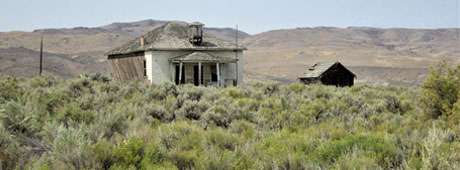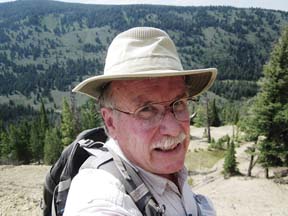No products in the cart.
Reynolds—Spotlight City

From Stage Stop to Scientific Site
By Ray Brooks
My quest to follow the 1864 route of the Reynolds-to-Silver-City stage line suddenly ended in several bangs. I was far into the Owyhee Mountains on a rough, narrow, seldom-traveled road. After reaching a small open knoll, I parked and walked a few hundred feet to take in a scenic view. As I enjoyed the pleasantly cool and nearly smokeless late-August afternoon, a bang startled me. In an open patch of hillside slightly below me and about two hundred feet away, dust was raised from the impact of a large-caliber bullet. I’m quite used to firearms, but that shot coming from someone out of sight, just below where my SUV was parked, bothered me. Without dawdling, I walked back to my vehicle and as I reached it, another shot hit the same open area, which convinced me to leave. Before I started my engine, a third shot kicked up dirt on the open patch. Obviously, someone below me was shooting a cleared spot. The shooter was almost certainly parked in the middle of the narrow road and if I continued downward, I would be driving into the line of fire. I decided now was a great time to turn around and head back toward Reynolds. On the way, I pondered why those shots were fired and decided they were meant to scare me off.
My day had started much better with an appointment at the wonderful Owyhee County Historical Museum in Murphy. I had contacted the museum concerning my wish to write a story for this magazine about the Boise–Silver City stage line, with an emphasis on the once-important stage stop of nearby Reynolds. My story would include a drive along the historic but little-used route from Reynolds to Silver City. When I met with museum director Eric Garsvo, he shared information about the route the stage line likely followed from Boise through where Kuna now is to a ferry crossing over the Snake River near the bridge at Walters Ferry and up to Reynolds, which was settled in 1864. Eric then introduced me to the museum’s publications editor, Mary O’Malley, and to museum volunteer Margret Budden. I had hoped to talk with a museum board member from Reynolds but she had declined, declaring that Mary and Margret knew more Reynolds history than she did. Margret had laid out publications on the history of Reynolds and on multiple stage lines, while Mary proved to have an endless and fascinating knowledge of Owyhee County history. Suddenly, I looked at my watch and realized it had been two-and-a-half hours since I had arrived at the museum. I apologized for cutting into Mary and Margret’s lunch break and started up the road to Reynolds, which is eleven miles west of Murphy.
This content is available for purchase. Please select from available options.
Purchase Only
Purchase Only


Comments are closed.